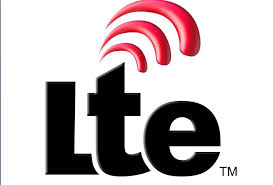
The first live LTE Broadcast session delivered recently by Telstra in Australia raised the natural question of why things should be different this time.
The recent history of cellular communications is littered with the skeletons of mobile broadcast’s dismal past, with Telstra’s demonstration as it happens coinciding with the death of the last DVB-H service in Poland. Other notable mobile broadcast failures include Qualcomm’s MediaFLO in the US, which is significant in that the company is now strongly backing LTE Broadcast. Qualcomm’s chipsets are at the center of Ericsson’s LTE Broadcast platform used by Telstra for its live demonstration that served various devices with concurrent video feeds, including a sports match replay, general news and a large video file over the single LTE Broadcast channel.
The same Ericsson/Qualcomm platform will be used in a much more significant test of LTE Broadcast by Verizon at the 2014 SuperBowl in early February 2014. As the most popular US sporting event this will be the perfect springboard for LTE Broadcast, giving it the chance to demonstrate its ability to serve large numbers of users with concurrent streams within a single 4G/LTE cell. This would not of itself prove the case for LTE Broadcast, given that its predecessors could also deliver concurrent streams to multiple users. That after all is the whole point of mobile broadcast. Yet there are important differences this time that suggest LTE Broadcast will at least be a contender for delivering mobile video.
One big difference is that there are now eligible handsets for viewing video, notably tablets but also larger smartphones and a host of emerging hybrid devices that have got consumers hooked onto mobile video consumption when they weren’t before.
The other big difference now is the backing of key industry players and the fact that LTE Broadcast, or more precisely the eMBMS (Multimedia Broadcast Multicast Services) technology on which it is based, is an integral part of the LTE ecosystem underpinning current and emerging 4G cellular services.
All the big industry hitters, including Alcatel-Lucent as well Ericsson and Qualcomm, are full square behind it, along with a host of key second string infrastructure vendors like MobiTV. DVB-H was also an open standard but it required significant additional infrastructure investment to deploy, as well as specific upgrades to handsets. LTE Broadcast will run in principle over all LTE infrastructure and while it is not supported by current commercially available handsets, it will come out of the box with the next generation.
Qualcomm's Mazen Chmaytelli, senior director of business development at its Labs, is on record saying he expects the first LTE Broadcast capable handsets to come to market in the second half of 2014. For these reasons LTE Broadcast will be quite widely deployed, with AT&T as well as Verizon Wireless planning to do so in the US, while Korea Telecom is collaborating with Samsung towards a launch in South Korea. In Europe France Telecom’s Orange and EE have announced firm intentions to deploy LTE Broadcast.
Yet at one time there was equal momentum behind DVB-H and despite the fact LTE Broadcast is much better placed its success is still not a done deal. One reason for that is the advance of Wi-Fi, which may enable venues to cater for large scale events more cost effectively through temporary deployment of hot spots. At the same time versions of existing digital terrestrial standards, such as the DVB’s T2 Lite, could be better placed to meet the requirement for general mass delivery of video to mobile devices. There is a good reason for this.
Outside major events such as Super Bowl where large numbers of people will be consuming the same video streams such as sporting action replays, there will not often be more than a handful of people watching the same content in a single cell and often it will only be one. In the latter case LTE Broadcast collapses to unicast. Yet at any given time there may well be a number of people watching different streams in a given cell, so there is still a need for an efficient video delivery infrastructure, which DVB T2 Lite would be as it has a much larger coverage area than an LTE cell. Within the much larger digital terrestrial coverage area, even mid-tier content would often by consumed concurrently by several people, so that mobile broadcast would save a lot of spectrum. Mobile operators such as EE have stated that the initial “monetization motive” for deploying LTE Broadcast will come from more efficient delivery of video both over the backhaul networks and at the radio level inside cells.
My contention is that these efficiency savings will not materialize outside major events. Even within such events, Wi-Fi may be a more cost effective way of addressing the “Super Bowl” effect and could be offered as a service by mobile operators, which would benefit by offloading the traffic directly onto the more efficient fixed broadband infrastructure. On this count there are already a variety of products available, for example from Birdstep in Sweden, which enable automatic selection of traffic for offloading to Wi-Fi according to specified business rules.
With some operators already talking about temporary LTE Broadcast channels for venues as a future business model, it will be interesting to see how this approach will stack up against Wi-Fi and the answer may be not very well. At least with the upcoming Verizon demonstration at Super Bowl 2014, the battle lines are being drawn. Part 2 is here.

[…] This concludes our 5 part series on LTE Broadcast, which started here. […]
[…] one in the series by Philip Hunter is here and part two is […]
[…] one in this series is here and part three is […]